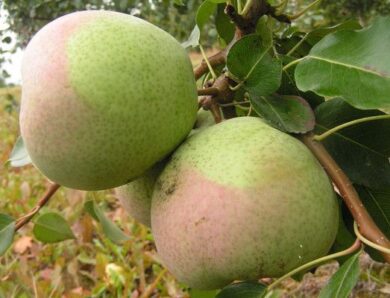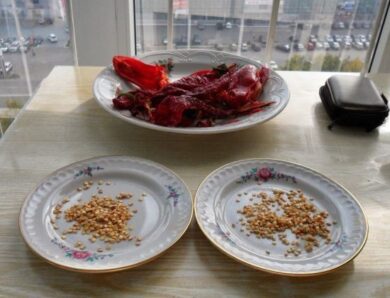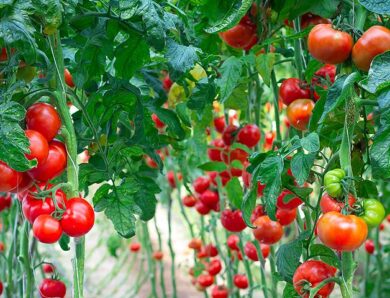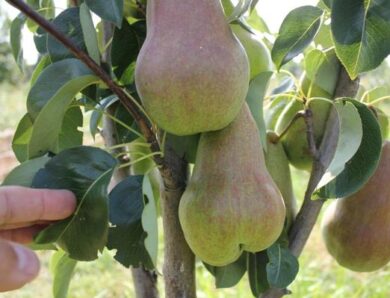When to dig onions and how to do it?
Many gardeners grow onions on their land. But for that, to get a good harvest, you need to know, when it needs to be removed from the beds. This article will be devoted to this question.
Features of onion harvesting
Harvesting onions has its own characteristics, ignorance of which can lead to that, that the whole harvest will be ruined. This vegetable can be stored all winter, but only on condition, that his cleaning of the beds took place on time. When the onion was harvested early, it will be stored poorly due to its immaturity. In the same situation, when the vegetables are harvested in time, the bulbs will begin to rot in the soil. And this process will continue after their excavation and further storage in the basement.
Cleaning this vegetable has the following features:
- it is recommended to clean onions in the morning. Until the moment, when cleaning is complete, the sun will start to warm up better and dry the harvested crop well;
- it is not recommended to pull onions from the ground;
- it should be dug very carefully with a fork. This will avoid damage to individual bulbs;
- after, how you dug up a vegetable, you need to let it dry a bit in the sun. As a result, it dries well in the sun and light wind, which will give the crop higher security;
- if it started to rain during the harvest, then the drying of onions is carried out only under a canopy.
Drying vegetables can be done in the oven, as well as in the electric dryer. In these devices, to avoid excessive drying of the excavated material, you need to set the temperature between 35oC and 40oC. In such conditions the onion should be 4-5 hours. pay attention, which is very important to prevent overdrying. Otherwise the upper husk will crack, which will open access to vegetables of pathogenic microflora (fungi, mold, etc.).
You can dry onions on the balcony or loggia. But the room must be well protected from moisture: insulated and glazed. To dry on the floor should be spread cardboard, on which in one layer to lay out all the dug vegetables. Periodically drying the material should be turned over, so that it dries well on all sides. Preferably, so that each bulb lay separately. This will reject poor quality material and prevent rot of neighboring vegetables.
You have to remember, what to dig in dry weather, not when it rains. When digging in dry weather, the bulbs are more likely to dry well. Also, the sky on the day of work should be clear.
After, when the onion is well dried, it is prepared for storage in this way:
- the bulbs need to carefully cut the roots (leaving only 1-1,5 cm);
- after that cut off also a stalk, leaving approximately 7-10 see its length. If you want to tie the harvest in braids, then the length of the stems can be increased;
- you also need to remove any damage from the bulbs, which may damage it during storage.
Only after this cleaning will be considered complete and the onion can be sent for storage in the cellar or tie it in "braids" for storage in an insulated and slightly cool attic.
Adherence to these requirements will allow you to not only harvest according to all the rules, but also keep it for the whole winter.
Video "Harvesting and storage of onions"
The author of the video demonstrates his onion harvest and talks about it, how best to dry onions and how to store it.
when to dig
Terms, when it is necessary to dig up onions vary depending on the region of the country. Example, in the middle lane this vegetable crop is harvested in late July and continued in early August. These deadlines must be met in that situation, when planting was carried out in mid-May. But it is not always possible to plant planting material in such terms. Therefore, many gardeners use various tricks for this, to determine the degree of maturity of the onion.
Also, the readiness of the vegetable for harvest can be determined by the condition of its upper scales. You can dig up the crop, when the upper scales are well dried. This is required, so that the stem is completely dry (became yellow and fell on the beds).
Some gardeners do not rely on this method of determining the maturity of the crop and prefer to calculate the timing of its harvest, Moreover, that it is absolutely not difficult to do.
Ripening of onions occurs at about 70 knocks after planting in the ground. So, if planting took place in late May (20 the numbers), then you can harvest in early August (1 the numbers). But it is important to keep this in mind, what variety of plant was planted: early, middle or late.
Therefore, the reference time will vary, and here 70 days, required for maturation, will be the same for all varieties. Sometimes you can find information about it, that the ripening period of the crop may vary from 68 to 83 days. Therefore, we can take the average value for calculations - 70-75 days.
If you have any doubts about that, when you need to clean onions, it is possible to combine a visual assessment of its maturity with mathematical calculations. In this situation, the chances of making a mistake will be almost zero.
Determining the time, when to harvest this vegetable, you need to know not only the time of landing, but also to assess the climatic conditions of the entire period of maturation of the culture. It has to do with that, that summer can seem both hot and sunny, still cold and rainy. After all, different weather conditions will either slightly accelerate the ripening process, or slow it down.
It is known, that in cool and rainy summers, harvest this cultivated plant should be a little later. It has to do with that, that colds lead to slow growth and growth of plants. But in prolonged hot and dry weather, the timing of harvesting should be postponed to a somewhat early period.
Harvesting onions on the lunar calendar
Using to calculate time, when to clean onions, monthly calendar, should also be based on the appearance of the plant. Here are the important signs, that the time for cleaning has come, there will be the following moments:
- plant stems began to dry and turn yellow;
- after a while they lay down on the beds and dried up completely. At the same time you can harvest even in that situation, when only part of the tops fell on the bed.
According to the lunar calendar, the harvest of this crop is carried out in the period from 20 July and mid-August. The month should be in descending order. If in the specified period of time the weather has changed and become cooler, as well as rain, then cleaning is carried out immediately. In this situation, it makes no sense to expect more favorable weather conditions, since there is a high probability, that the deterioration of the weather will be delayed and the short-term rain will be replaced by prolonged downpours.
As we see, Harvesting onions on the lunar calendar is not much different from the usual digging. Unless the moon is falling.
Video "Harvesting and storage of onions"
The author of the video - an experienced gardener - talks about the basic principles of onion harvesting and proper storage.
how to dig
Many gardeners, especially those, who have only recently begun to understand the art of growing cultivated plants, may incorrectly perform the procedure of digging onions. Very often, when digging, novice gardeners damage the bulbs with garden tools. To reap a quality harvest, which then lies all winter and does not spoil, it is important to dig it properly.
To do this, follow these rules:
- you need to start digging in time, when the bulbs are ripe;
- sunny and clear weather is recommended;
- start digging onions in the morning, using a pitchfork. If a shovel will be used, then there is a high risk of damage to the vegetables. Inexperienced gardeners, poorly handled with a shovel, often cut large pieces into her bulbs. Naturally, such specimens will not be stored and should be used for cooking or salading on the same day, when they were dug out of the ground;
- after completing this process, the harvested crop does not need to be sent for storage immediately. Experienced gardeners are advised to slightly dry it in the sun.
There is an opinion among novice gardeners, that this is a cultivated plant needs to be pulled out of the ground. But this is wrong, as in the situation, when the soil is solid, you can cut off the stem. Because of this, such onions will be much worse stored and rot in your cellar. You can pull out the bulbs in that situation, when it rained the day before and the ground was well soaked. Only under such conditions you can easily get the vegetables out of the ground, without damaging its stem.
As we see, such a simple process, how to clean onions has many nuances, non-compliance with which may lead to spoilage of the crop during winter storage.




